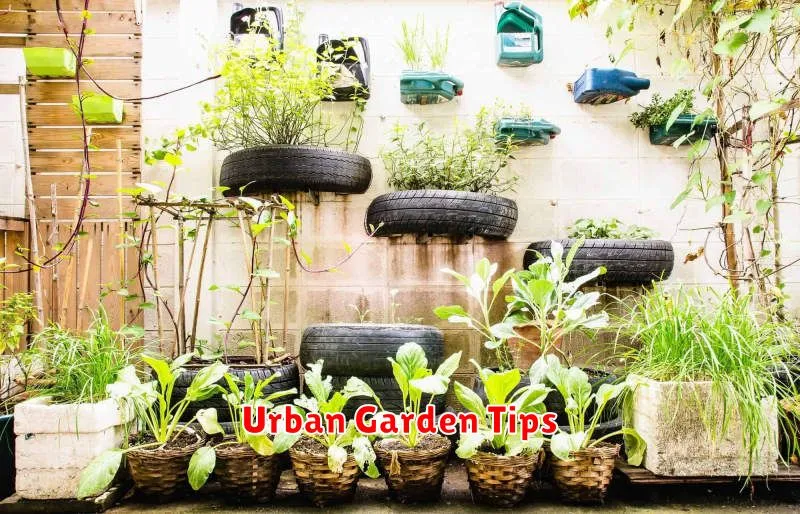Transforming a small urban space into a vibrant and productive garden is entirely achievable. This article presents 8 small garden ideas perfect for urban homes, offering creative solutions to maximize limited outdoor areas. Whether you have a tiny balcony, a narrow patio, or just a sunny windowsill, these small garden design ideas will inspire you to cultivate your own green oasis, even in the heart of the city. Learn how to create a flourishing urban garden with our practical tips and small space gardening solutions, focusing on maximizing space and creating a beautiful and functional outdoor area.
Vertical Garden Frames
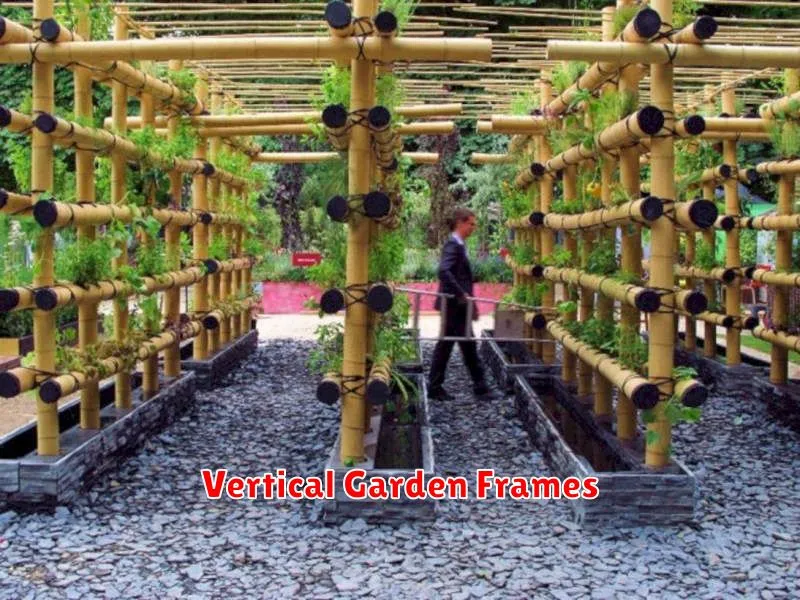
Vertical garden frames offer a stylish and practical solution for incorporating greenery into spaces where traditional gardening is limited. They provide a structured framework for plants to climb and thrive, maximizing vertical space and enhancing the aesthetic appeal of any environment.
Design versatility is a key advantage. Frames can be constructed from a wide array of materials, including wood, metal, and recycled plastics, allowing for customization to match existing décor. The size and shape are also highly adaptable, ranging from small window boxes to large, freestanding structures that can transform an entire wall.
Beyond the aesthetic benefits, vertical garden frames offer several practical advantages. They improve air quality by increasing oxygen levels and absorbing carbon dioxide. Furthermore, they can contribute to temperature regulation by providing shade and reducing the urban heat island effect. In addition, they can provide a degree of sound insulation, reducing noise pollution in urban settings.
Installation is relatively straightforward, depending on the chosen design and materials. Many pre-fabricated frames are available, simplifying the process. However, constructing a custom frame offers greater control over size, materials, and aesthetics. Regardless of the chosen method, proper planning and attention to structural integrity are crucial for long-term stability and plant support.
Plant selection is crucial for success. Choosing plants appropriate for the available sunlight and the frame’s size and orientation is important. Vines, trailing plants, and smaller flowering plants are commonly used in vertical gardens, creating a dynamic and visually appealing display. Regular maintenance, including watering, pruning, and fertilization, will ensure the health and vibrancy of the plants and the overall aesthetic appeal of the garden frame.
DIY Wooden Planter Boxes

Building your own wooden planter boxes is a rewarding project that allows for creative customization and cost savings compared to purchasing pre-made options. This guide provides a step-by-step process for creating attractive and durable planter boxes to enhance your garden or home décor.
Materials you will need include untreated lumber (cedar, redwood, or pine are excellent choices), screws appropriate for the wood type, a drill with drill bits, a saw (circular saw or hand saw), measuring tape, wood glue, sandpaper, and exterior wood sealant or paint (optional). Consider the desired dimensions of your planter box before purchasing materials. Remember to account for the thickness of the wood when calculating the overall size.
The construction process begins with cutting the lumber to the required lengths for the sides, bottom, and any dividers you may want to incorporate. Ensure all cuts are precise and square for a neat finished product. Next, apply wood glue to the joints and secure the pieces together using screws. Pre-drilling pilot holes will help prevent the wood from splitting. Pay attention to the alignment of the corners to ensure a strong and aesthetically pleasing structure.
Once the box is assembled, sand down any rough edges or splinters for a smooth finish. This step is crucial for both aesthetics and safety. You can then apply an exterior wood sealant or paint to protect the wood from the elements and extend the lifespan of your planter box. Allow sufficient drying time before planting. Choose a sealant that is appropriate for outdoor use and follows all manufacturer instructions.
Finally, fill your newly constructed planter box with high-quality potting soil and your chosen plants. Enjoy the satisfaction of creating a beautiful and functional addition to your outdoor space, tailored precisely to your needs and preferences. Remember to consider drainage holes in the bottom of the planter box to prevent waterlogging and root rot.
Solar Garden Lights
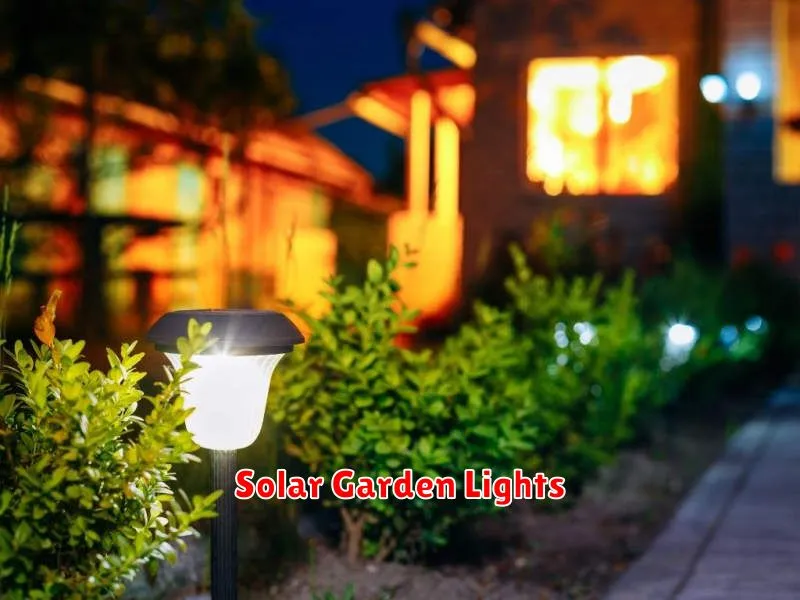
Solar garden lights offer a convenient and eco-friendly way to illuminate outdoor spaces. They harness the power of the sun, eliminating the need for electrical wiring and reducing your carbon footprint.
These lights are available in a wide variety of styles and designs, catering to diverse aesthetic preferences. From classic lanterns to modern, sleek designs, there’s a solar garden light to complement any landscaping style. Consider factors such as size, brightness, and material when making your selection.
One of the key advantages of solar garden lights is their ease of installation. Most models require minimal setup; simply stake them into the ground or attach them to a surface and allow the solar panel to absorb sunlight. This eliminates the need for professional installation, saving you both time and money.
Maintenance is also remarkably straightforward. Regular cleaning of the solar panel is usually sufficient to ensure optimal performance. Replacing the batteries, when necessary, is typically a simple process.
However, it’s important to note that the effectiveness of solar garden lights is dependent on sunlight exposure. Their brightness and duration of illumination can vary depending on weather conditions and the amount of sunlight received. Choosing a location with ample sunlight is crucial for optimal performance.
In conclusion, solar garden lights present a compelling alternative to traditional outdoor lighting. They offer a blend of convenience, aesthetics, and environmental responsibility. By carefully considering your needs and choosing a suitable model, you can enjoy the benefits of beautifully illuminated outdoor spaces powered by the sun.
Compact Water Features
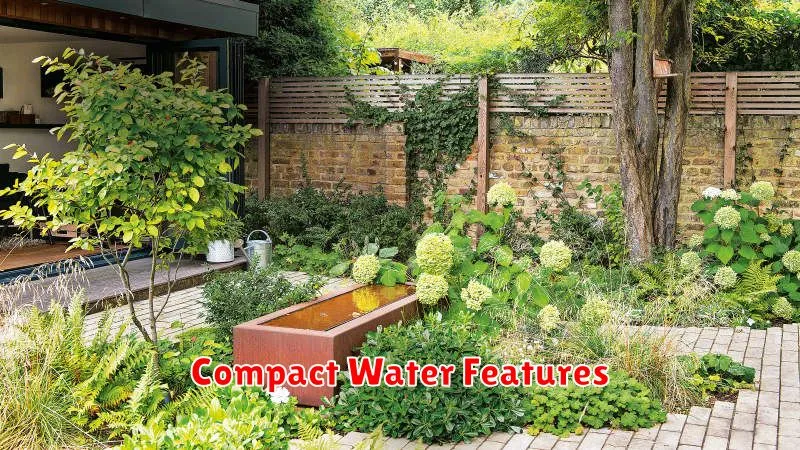
Compact water features offer a delightful way to introduce the soothing sounds and visual appeal of water into even the smallest of gardens or outdoor spaces. Their diminutive size makes them ideal for patios, balconies, or courtyards where larger ponds or fountains may be impractical.
These features come in a wide variety of styles, catering to diverse tastes and preferences. Some popular options include miniature waterfalls cascading over rocks, self-contained fountains with recirculating pumps, and stylish bowls with gently bubbling water. The materials used are equally diverse, ranging from natural stone and ceramic to modern, sleek materials like stainless steel and resin.
One of the key advantages of compact water features is their ease of maintenance. Their smaller scale means less water to manage and simpler cleaning procedures. Furthermore, many models are designed with built-in filtration systems, minimizing the need for frequent intervention. This low-maintenance aspect makes them a practical choice for busy individuals or those seeking a stress-free addition to their outdoor environment.
Beyond their aesthetic value, compact water features also offer several other benefits. The gentle sounds of running water can create a calming and tranquil atmosphere, effectively masking unwanted noise pollution. Moreover, the evaporative cooling effect of the water can contribute to a slightly cooler microclimate in the immediate vicinity, particularly valuable during hot summer months. Ultimately, choosing a compact water feature is a simple way to enhance the beauty and serenity of any outdoor area.
When selecting a compact water feature, consider factors such as the available space, the overall design style of your garden, and your personal preferences regarding the sound and visual characteristics of the water feature. Careful consideration of these elements will ensure that your chosen feature complements your surroundings and provides years of enjoyment.
Hanging Flower Pots
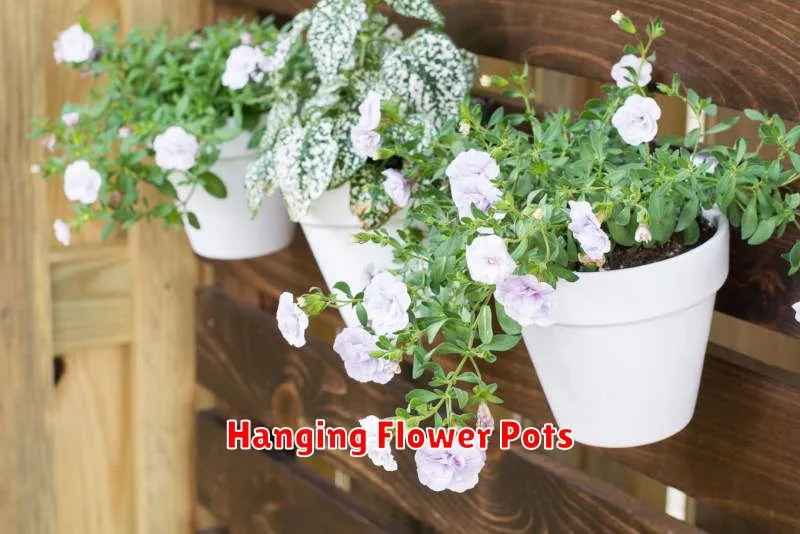
Hanging flower pots offer a unique and aesthetically pleasing way to add greenery to your home or garden. They’re a versatile option, perfect for small spaces or areas where traditional planters won’t fit.
One of the biggest advantages is the space-saving aspect. Hanging pots utilize vertical space, freeing up valuable floor or tabletop area. This makes them ideal for balconies, patios, or even indoor rooms with limited floor space.
Variety is another key benefit. Hanging pots come in a wide range of materials, sizes, and styles. You can find options made from ceramic, metal, wood, or plastic, each with its own unique look and feel. Their designs can also vary dramatically, from simple and minimalist to elaborate and ornate.
Beyond aesthetics, hanging pots also offer practical advantages. They can help protect plants from pests and ground-level diseases, and the elevated position can improve air circulation around the plants, promoting healthy growth.
However, there are some considerations. Hanging pots require careful watering to prevent overwatering or underwatering. The weight of the pot and the plant needs to be taken into account when choosing a hanging location and ensuring the structure is robust enough to support it.
In conclusion, hanging flower pots are a fantastic choice for anyone looking to add a touch of nature to their surroundings. Their versatility, space-saving design, and aesthetic appeal make them a popular choice for both indoor and outdoor settings. Just remember to consider the practical aspects of watering and weight capacity before hanging your pots.
Potted Herbs for Kitchen Use
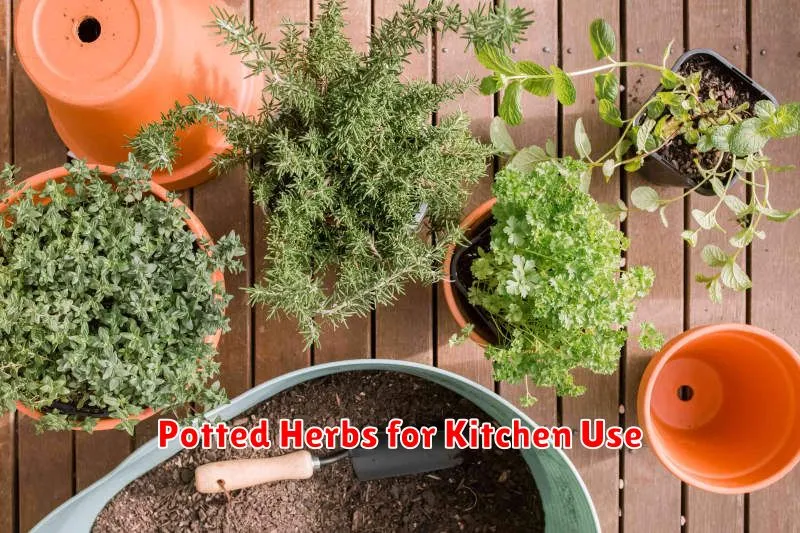
Growing your own herbs in pots offers a convenient and rewarding way to enhance your culinary creations. Fresh herbs significantly elevate the flavor of dishes, and having them readily available in your kitchen makes cooking a more enjoyable experience.
Choosing the right pots is crucial. Select pots that are appropriately sized for the herb type, ensuring adequate drainage to prevent root rot. Terracotta pots are a popular choice due to their breathability, while plastic pots offer durability and ease of maintenance.
Sunlight requirements vary depending on the herb. Basil, for example, thrives in full sun, while mint prefers partial shade. Research the specific needs of your chosen herbs to ensure optimal growth. A sunny windowsill or a dedicated herb garden are both excellent options.
Proper soil is essential. Use a well-draining potting mix, avoiding heavy clay-based soils. Regular watering is necessary, but avoid overwatering, which can lead to root problems. Allow the soil to dry slightly between waterings.
Harvesting your herbs is simple and rewarding. Snip leaves as needed, encouraging bushier growth. For some herbs, harvesting the entire plant might be necessary to maintain their vigor. Regular harvesting helps to prevent the plants from becoming leggy.
Popular choices for potted herbs include basil, mint, chives, parsley, oregano, and rosemary. Experiment with different varieties to discover your favorites and create a diverse and flavorful herb garden in your kitchen.
With a little care and attention, your potted herbs will thrive, providing you with a continuous supply of fresh, flavorful ingredients for all your culinary adventures. Enjoy the benefits of having fresh, homegrown herbs readily available!
Stone Pathways for Charm
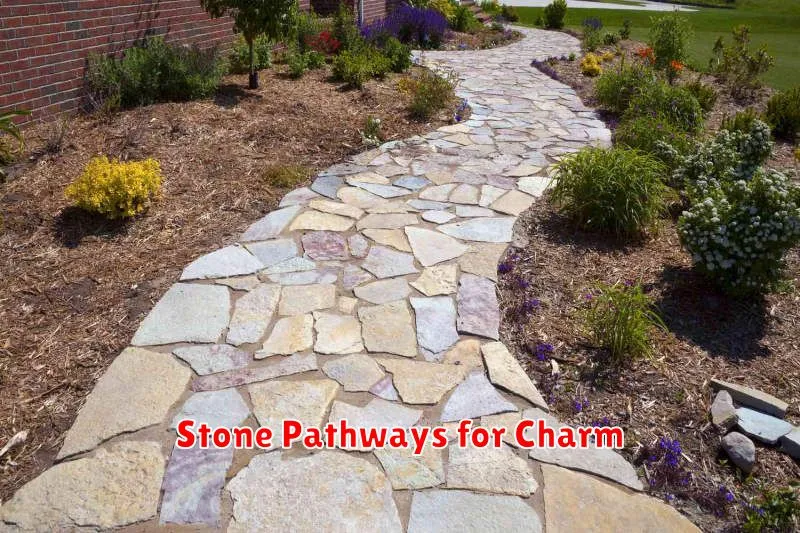
Stone pathways add a touch of timeless elegance and rustic charm to any outdoor space. Whether you’re aiming for a formal garden aesthetic or a more relaxed, natural feel, a stone path offers both beauty and practicality.
The durability of stone is a significant advantage. Unlike other paving materials, stone pathways can withstand heavy foot traffic and harsh weather conditions for many years, requiring minimal maintenance. This longevity makes them a worthwhile investment.
There’s a vast array of stone types available, each offering a unique look and feel. From the clean lines of flagstone to the rustic charm of cobblestones, the choice depends on your personal preference and the overall style of your landscape. Consider the size and shape of the stones to create the desired effect.
Installation can be a DIY project for those with some DIY experience, or you can hire a professional landscaper for a flawless finish. Proper preparation of the base is crucial for a long-lasting pathway; ensure adequate drainage to prevent settling and erosion.
Beyond their practical benefits, stone pathways offer a versatile design element. They can be straight and formal, winding and whimsical, or incorporate interesting curves and borders to enhance the overall garden design. Adding planting beds alongside the path further elevates its visual appeal.
Ultimately, a stone pathway is more than just a walkway; it’s a statement piece that enhances the beauty and functionality of your outdoor space. Its enduring appeal and low-maintenance nature make it a popular choice for homeowners seeking both style and practicality.
DIY Recycled Garden Decor
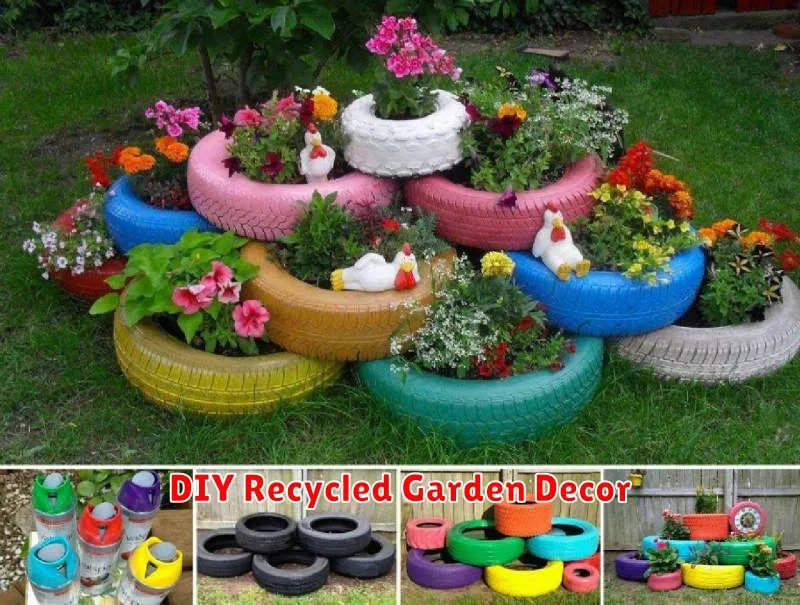
Transform your garden into a vibrant and unique space with these easy DIY recycled garden decor ideas. Upcycling old items not only saves you money but also reduces waste, contributing to a more sustainable lifestyle. Get creative and add a personal touch to your outdoor haven!
One simple project involves creating charming planters from repurposed containers. Old teacups, tin cans, or even boots can be transformed into beautiful homes for your favorite flowers or herbs. Simply clean your chosen containers, add drainage holes if necessary, and plant your seedlings. You can even personalize them with paint, decoupage, or other embellishments.
For a more ambitious project, consider building a birdhouse or feeder from reclaimed wood or pallets. This is a great way to attract feathered friends to your garden and enjoy their cheerful presence. Remember to consider the safety and comfort of the birds when constructing your birdhouse, ensuring adequate ventilation and protection from the elements.
Don’t underestimate the power of simple garden markers made from recycled materials. Use old spoons, forks, or even bottle caps to label your plants. A bit of paint and a permanent marker can add a touch of rustic charm and make identifying your herbs and flowers a breeze.
Finally, consider creating unique garden art using recycled materials like glass bottles, broken pottery, or metal scraps. These items can be arranged to create mosaics, wind chimes, or whimsical sculptures that add personality and flair to your garden. Let your imagination run wild and embrace the unexpected possibilities of upcycling!
These DIY recycled garden decor projects are not only environmentally friendly but also a fun and rewarding way to personalize your outdoor space. So gather your recycled materials and get creative – your garden will thank you for it!

